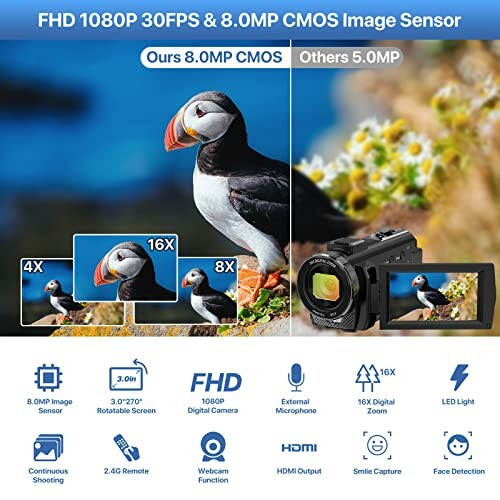
The Ultimate Guide to Choosing the Right DSLRs
Key Takeaways
- DSLR cameras offer superior image quality and versatility for beginners.
- Look for essential features like sensor size, autofocus system, and video capabilities.
- Brand reliability and customer service greatly matter in your purchase decision.
- Spend time researching and comparing options before making a decision.
Choosing a DSLR can be overwhelming, especially for beginners. With countless options available, understanding what makes a good camera can simplify the decision-making process. This guide will walk you through the essential features, key brands, and types of DSLRs to help you make an informed choice.
What is a DSLR?
A Digital Single-Lens Reflex (DSLR) camera is a popular choice for many budding photographers. It combines the simplicity of digital photography with the advanced features and capabilities of traditional film cameras. Here's why you should consider one:
- Image Quality: DSLRs provide excellent image quality due to their larger sensors.
- Interchangeable Lenses: You can customize your shooting experience with different lenses.
- Manual Controls: Full control over settings allows for creativity.
Key Features to Consider
1. Sensor Size
Sensor size plays a vital role in image quality. Here are the common sizes:
- Full Frame: Offers the best image quality and low-light performance, but often comes at a higher price.
- APS-C: Slightly smaller, yet great for beginners and more affordable.
- Micro Four Thirds: Compact and light but lenses often need cropping.
2. Megapixels
More megapixels can mean better image quality but remember, it's not just about the numbers. A camera with 20 MP can produce better results than one with 25 MP if it has a superior sensor.
3. Autofocus System
An efficient autofocus system can significantly impact your photography experience. Look for DSLRs with:
- Phase Detection: Faster and better for tracking moving subjects.
- Contrast Detection: Good for stationary subjects with high accuracy.
4. Video Capabilities
If you plan on shooting videos, ensure your DSLR can record at least 1080p resolution. Many recent DSLRs now offer 4K options as well.
Top Brands for DSLRs
Here are two leading brands in the DSLR market:
- Canon: Known for its user-friendly interface, range of lenses, and affordable models.
- Nikon: Renowned for excellent image quality and robust build quality.
Popular DSLR Models
| Model | Key Features | Price Range | Link |
|---|---|---|---|
| Canon EOS Rebel T6 | 18 MP CMOS Sensor, Dual Lens Kit | $400 - $600 | Learn More |
| Canon EOS 90D | 32.5 MP, 4K UHD Video, DIGIC 8 Processor | $1,200 - $1,400 | Learn More |
Practical Tips for Beginners
Getting Started with your DSLR
- Always carry your camera to practice in different situations.
- Experiment with different settings and modes.
- Watch online tutorials to understand specific features.
- Join photography forums to improve your skills and knowledge.
- Invest in a sturdy tripod for stability.
Vlogging and More: DSLR Alternatives
If you're looking into vlogging or casual shooting, DSLRs might not be your only option. Here’s a great alternative you might consider:
ALSONE Video Camera YouTube Vlogging Camera Recorder
This FHD 1080P camera features a 3.0 Inch rotating screen and a 16X digital zoom, perfect for capturing every moment.
More DetailsConclusion
Selecting the right DSLR camera is essential for your growth as a photographer. Keeping in mind key features, reputable brands, and personal needs will help you make the right choice. Don't rush the decision—take your time in selecting the DSLR that best fits your style and needs. For more information, you can also check out our resources on Photography Tips & Tutorials or our guide on Cameras for Beginners.
Pros
- High image quality
- Interchangeable lenses
- Manual controls for creative freedom
- Versatile for all photography scenarios
Cons
- Can be bulky and heavy
- Requires a learning curve for beginners
- Usually pricier than compact cameras
